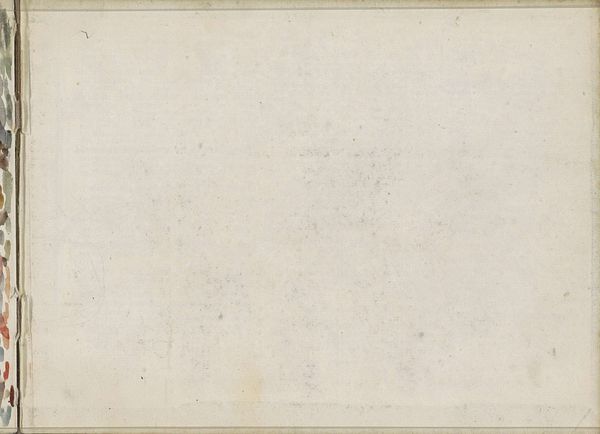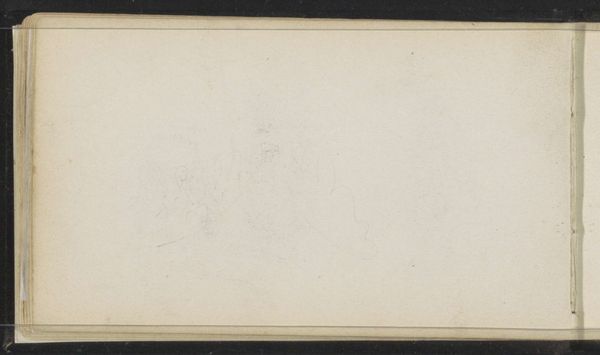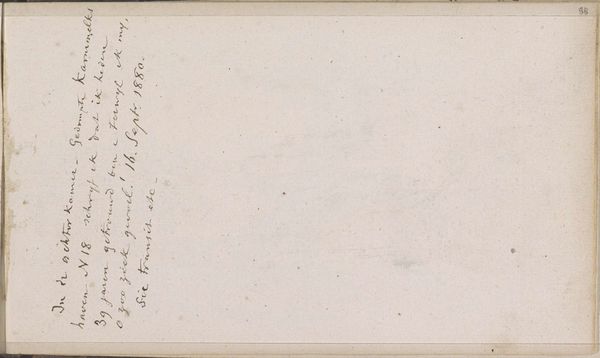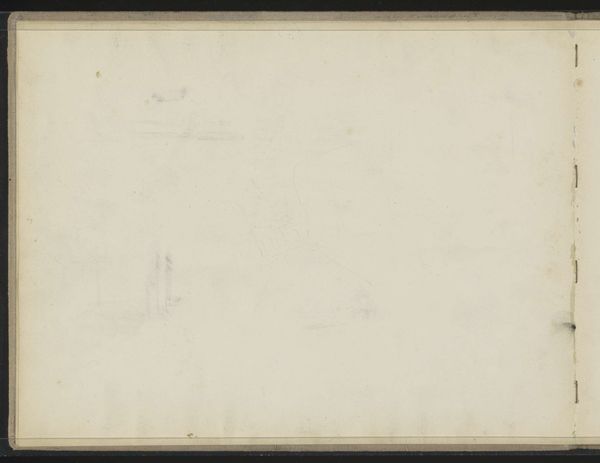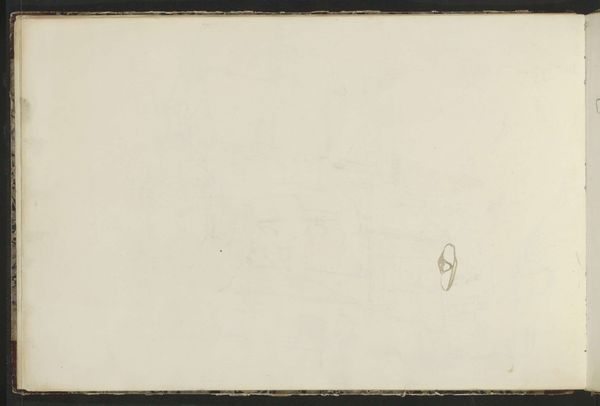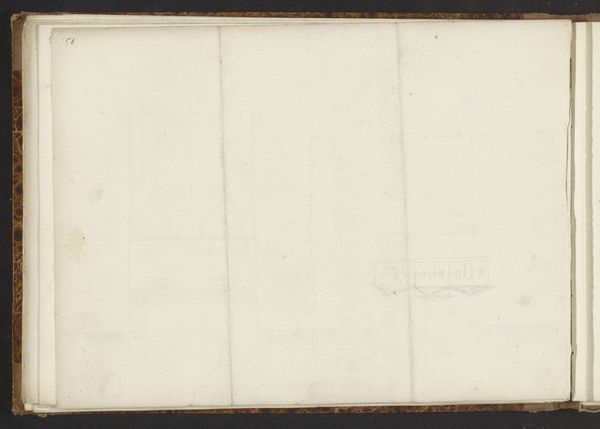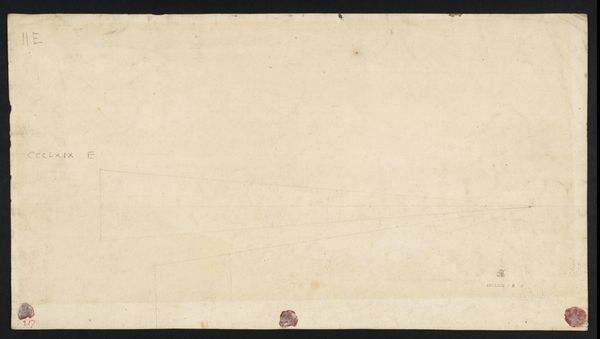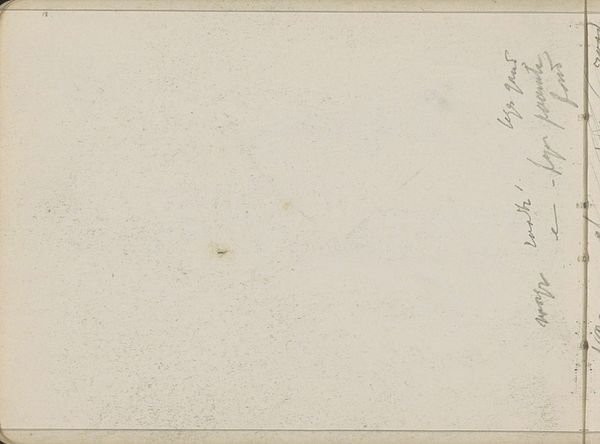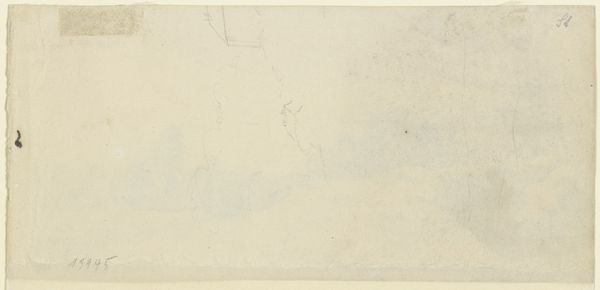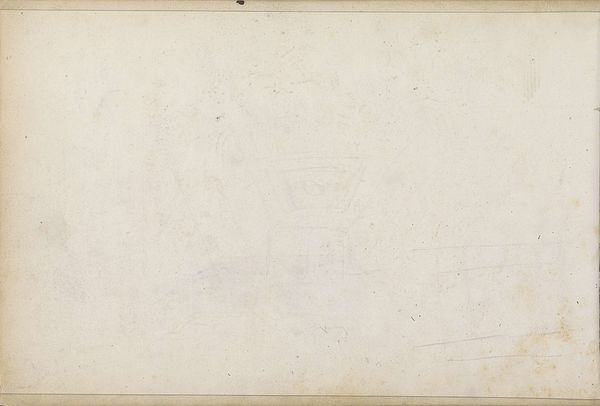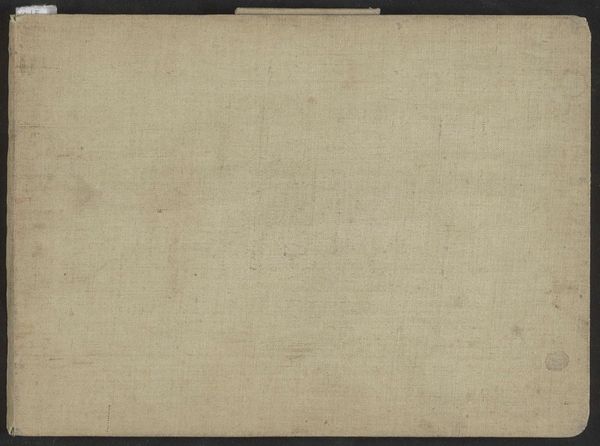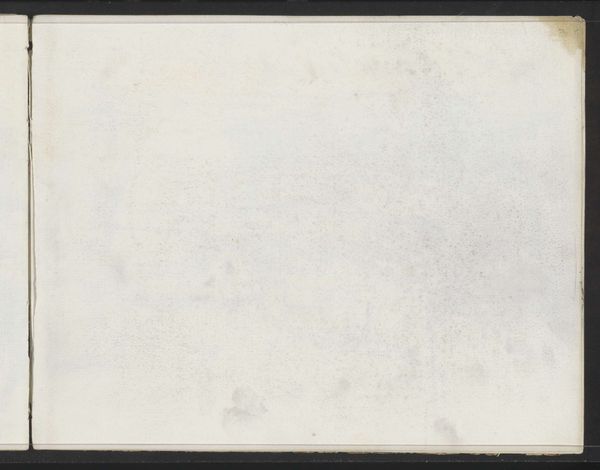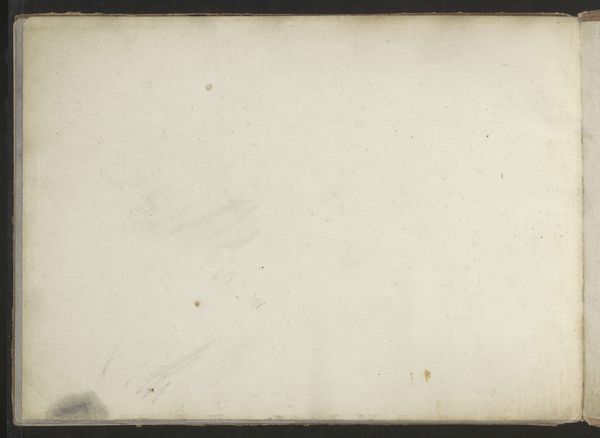
Copyright: Rijks Museum: Open Domain
Editor: Here we have Johannes Tavenraat's "Notitie," created sometime between 1864 and 1868. It’s a watercolour and drawing on paper, a tiny landscape now residing in the Rijksmuseum. It's faint, almost dreamlike… ethereal. What can you tell me about it? What catches your eye? Curator: Oh, this whispers secrets, doesn’t it? It’s more than just a landscape; it's a feeling. I sense Tavenraat wasn’t just documenting what he saw, but also what he *felt* in that moment. That hazy quality… It's a Romantic soul grappling with nature's immensity. Do you think it is unfinished? Editor: Possibly? Or maybe that indistinct quality is deliberate, a conscious choice? Curator: Exactly! Look at how he uses the watercolour; it’s less about precise lines and more about evoking atmosphere. It’s a visual poem! I imagine him, sketchbook in hand, chasing the light. It almost makes you nostalgic for a time you didn't live in. Editor: It's interesting that you mention a poem, it almost feels more like a faded memory. But how does it differ from other Romantic landscapes of the time? Curator: Ah, there's the sharp question. While some Romantics leaned towards grand, dramatic scenes, Tavenraat often focused on quiet observation, intimate moments. It’s about feeling connected, not conquered. It makes you wonder, doesn't it, what was on his mind? Was it simply artistic practice, or did this represent something deeper? Editor: It definitely makes me appreciate the subtler side of Romanticism. It’s a very intimate experience, to look at it. Curator: Yes, like peeking into a private world, a captured moment. Art at its finest, in my humble opinion, isn't just about what is depicted, but what it evokes. Editor: I agree completely! I came in expecting another landscape, and left with a mood.
Comments
No comments
Be the first to comment and join the conversation on the ultimate creative platform.
